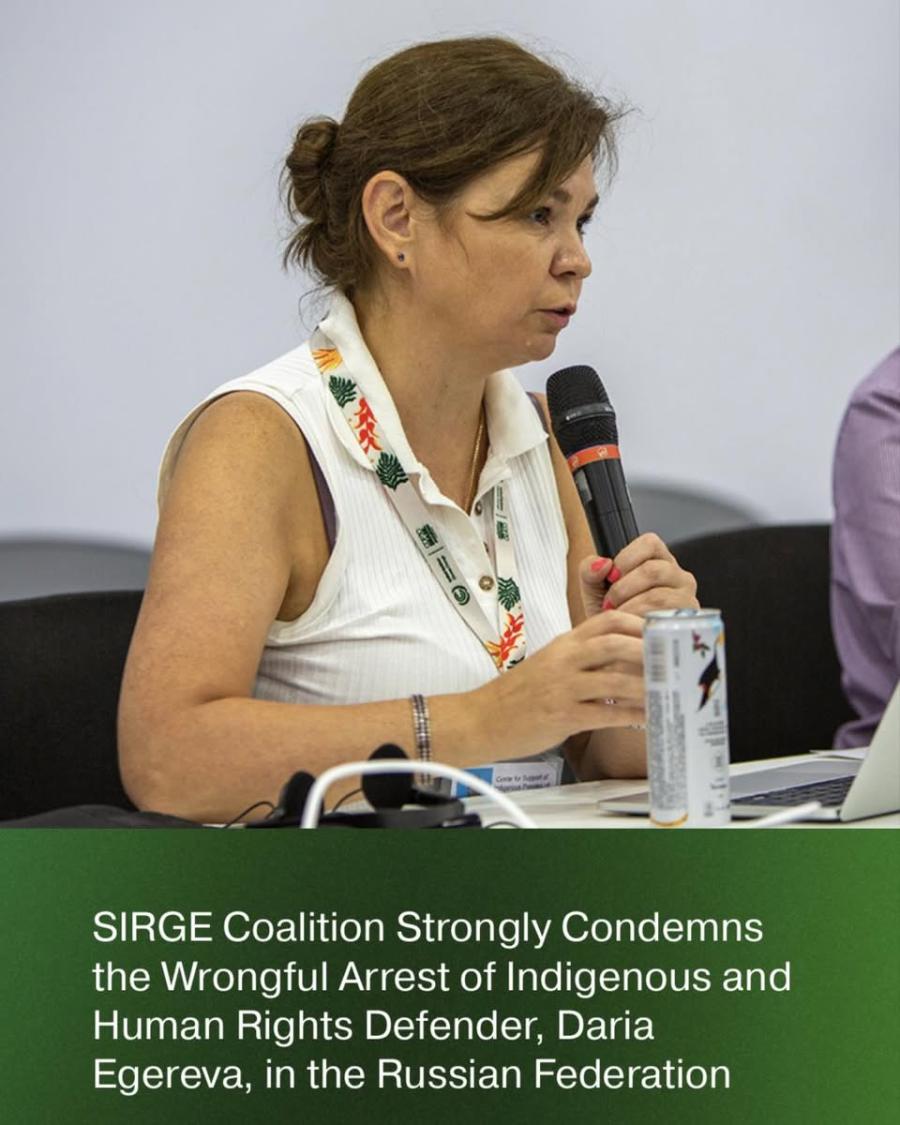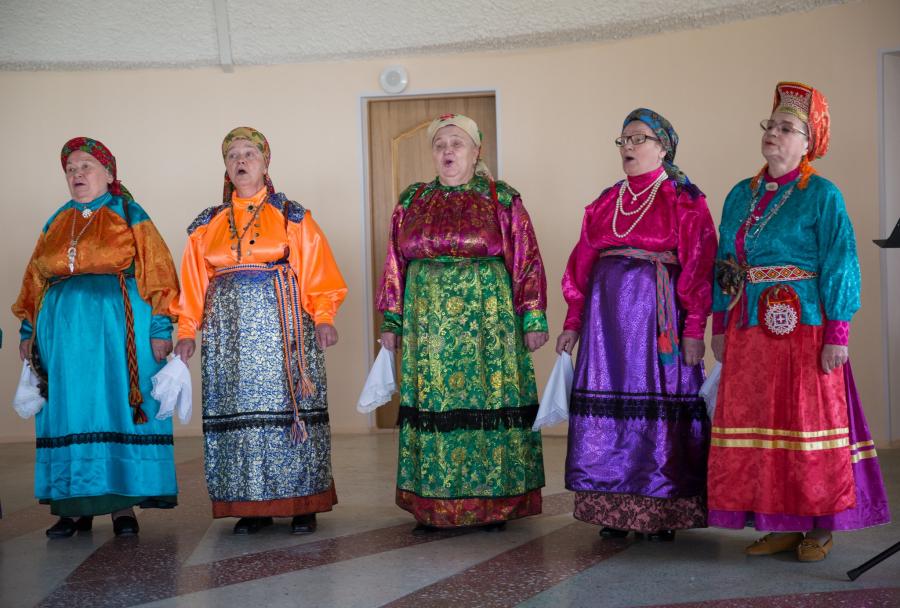The Okinsky Region within the Buryat Republic of Russia occupies the central plateau and the surrounding ranges of the Eastern Sayan Mountains. Today it is inhabited predominantly by two ethnic groups—the Soyot and the Buryat. The total population of the region is 4,595: 2,039 Soyot, 2,506 Buryat, and 50 Russians. The majority of these peoples now practice mountain-type cattle breeding.
The ancestors of the Soyots (and of the closely related Tofa, Tozhu, and Dukha) were proto-Samoyedic hunter-gatherers who arrived in the Eastern Sayan region from Western Siberia at the end of the third millennium BC and the beginning of the second millennium BC. Subsequently, cattle-breeding Tungus (Evenki) and Ket peoples came to the Sayan Mountains at the turn of the first millennium AD. These peoples began to domesticate reindeer, and turned this Eastern Sayan region—which encompasses the mountainous taiga areas of present-day Tofalaria in southwestern Irkutsk Oblast’, the Tozhu District in the Republic of Tyva, the Okinsky region of Buryatia, and the Lake Khovsgol area of Mongolia—into the first center of reindeer herding and breeding in the world. The region also had favorable conditions for mountain cattle breeding, allowing the co-existence and cooperation of two complementary economic-cultural systems.
Turkic-language cattle- and horse-breeding peoples moved up from the Inner Asian steppes at the beginning of the first millennium AD and extensively influenced the Samoyedic, Ket, and Tungus populations of the Eastern Sayan Mountains. While the Samoyeds adopted the Turkic language as well as some other elements of Turkic material and spiritual culture, they could not be fully subjugated and assimilated by either the Turkic-speaking tribes nor, later, by the Mongolians. The reindeer-herding peoples managed to resist the onslaught of these cattle and horse breeders by retreating into the inaccessible mountains, and by proving themselves indispensable to the newcomer steppe peoples by providing them with invaluable furs. Throughout the Middle Ages the group retained not only its hunting, reindeer-herding, and cattle-breeding traditions, but also its ethnic identity and culture.
The Russian Empire first penetrated the Eastern Sayans in the middle of the 17th century, and by the beginning of the 18th century had taken control of the entire area. The Russian government resettled 100 Buryat families from the steppe and forest-steppe regions of Pribaikalia and Transbaikilia to the Okinsky area, where they were supposed to guard the Chinese border. From this point the historical path of the Soyots diverges from that of the Tofa, Tozhu, and Dukha. The newly arrived Buryats had to adopt some of the habits of the indigenous Soyot in order to survive. For example, they took up yak breeding and learned to migrate seasonally. The Buryats also adopted the practice of using reindeer as mounts to hunt, but never took up reindeer herding and preferred borrowing reindeer solely for the hunting season or keeping their own reindeer among Soyot herds.
But the influence of the Buryats on the Soyot was much greater. By the end of the 19th century, the Buryats dominated administratively; their language had for all practical purposes replaced the Soyots’ adopted Turkic language; and their cattle-breeding culture soon came to predominate over reindeer herding, even for many Soyots.
But reindeer herding was not completely lost. Reindeer still enabled the Soyot to travel through vast territories of mountainous taiga that were completely impassable by any other domesticated animal, and were indispensable for hunting. The deer also provided the Soyot with clothes, dwellings, various household items, milk, and meat.
Documents from the first anthropological expedition into the Soyot reindeer-herding region in 19261 describe a difficult period in Russian history and present Soyot reindeer herding as a dying branch of the economy. But later research and data collected from Soyot elders show that the herding tradition easily overcame the period’s difficulties and endured until the middle of the 20th century, when the government interfered.
The final destruction of the ancient Soyot reindeer-herding traditions began in the early 1930s when all individually owned herds were commandeered by the Soviet state and united into one collective herd. In 1940, the government designated the Okinsky Region an aimag, a larger administrative district than before, and officially recognized its entire population as Buryat, thereby effectively denying the existence of the Soyot as an ethnic group. Soyot elders in the late 1980s said the policy drew a great deal of disapproval from the Soyot population when it was announced, but the political situation of the time prevented people from openly protesting. The policy caused a gradual erosion of the Soyot national identity, and the next generation of Soyot called themselves Buryat. The final blow to traditional nomadic reindeer herding was dealt in 1963 when the Soviet government labeled the practice unprofitable and disbanded the herd. By the late 1980s, the Soyot population appeared to be completely assimilated into Buryat culture—only 30 people still identified themselves as Soyot.
When the Soviet Union collapsed in 1991, the Soyot population suddenly spoke out. The revival of Soyot identity was practically instantaneous, and after several years the Soyot reappeared as a separate ethnic group. In 1993, they founded the Association of the Soyot Nation, uniting 812 people; in 1999, according to the data of the local census bureau, the Soyot population was 2,039, or 43.7 percent of the total population of the Okinsky region. The Soyot have successfully restored their name and identity as one of the officially recognized Indigenous Small-Numbered Peoples of the North. In 2000, following the request of the government of the Okinsky Region, the People’s Khural (Grand Assembly) of the Republic of Buryatia agreed to change the name of the Okinsky Region to the Soyot National Aimag. The Soyot were again reborn and set out on the course for further development.
Throughout this period of cultural renaissance, the Soyot have been striving to reintroduce reindeer herding, which they increasingly realize is essential for their ethnic identity and traditional culture. In 1992 the administration of the region, with support from Ecologically Sustainable Development, a U.S.-based non-governmental organization, purchased 63 reindeer from the neighboring Tofa and gave them to a Soyot cattle-breeding family who lived in the area of traditional reindeer herding. The family received two years of herder training from the Tofa, and while international funding was available the herd increased to more than 100 head. Unfortunately, within two to three years of the close of foreign support, wolf predation and lack of experience on the part of the Soyot herders led to a decline in the herd. The major challenge for the Soyot herders was to recognize and be willing to undertake the rigors of reindeer herding, including frequent seasonal migrations, long periods of time supervising the deer in the remote taiga far removed from village life, and the daily building of smudge-pots to ward off biting insects. In 1997, the 76 remaining reindeer were entrusted to the Dambayev family, who reorganized the herd with more care and vigilance, but a sudden episode of necro-bacilliosis (a hoof-deteriorating disease) and frequent winter wolf attacks killed off more of the herd. In 1999 fewer than 60 reindeer remained, and only 12 survived a year later.
Even though the reindeer-herding tradition had been broken for only 30 years—the life span of just one generation—its reintroduction was on the verge of failure. Elders who possessed skills and knowledge accumulated through the centuries had died; their experiences had comprised not only practical skills but, above all, the traditional pattern of behavior that determined the herdsmen’s attitudes toward their reindeer and lifestyle. Reindeer herding required love and understanding of the reindeer, as well as devotion to the nomadic life. It obliged indifference to comfort, delight in hunting, and other traits that had kept this type of economy afloat for many centuries.
Reindeer herding had been instilled into the herders’ being from their birth and had molded their emotional understanding of their place in the world. With a generation of herders lost, the Soyot must now find some way to revive the attitude that helped their ancestors preserve their ethnic identity and integrity throughout the ages and in the most difficult periods of history.
1. The expedition was headed by B.E. Petri, a professor at Irkutsk University. The documents of the expedition are now kept in the State Archives of the Irkutsk Region (Stock P-1468).
Larisa R. Pavlinskaya is a Russian ethnographer based in St. Petersburg, Russia, who was one of the earliest specialists recognizing the unique cultural identity of the Soyot. Her research of early-20th-century anthropological and ethnographic work in the eastern Siberian region provided key background used in the successful appeal to the Russian Federation to identify the Soyot as a Small-Numbered Peoples of the North.
References and further reading
Aleksenko E.A. (1980). The Ket Problem. In Ethnogenesis of the Peoples of the North. Moscow.
Bichurin N.Ya. (1950). Collected Data about the Peoples Inhabiting Central Asia in Ancient Times. Part I. Moscow.
Chernetsov V.N. (1973). Ethnic and Cultural Areas in Forest and Subarctic Zones of Eurasia in Neolithic Period. In Archaeology of the Urals and Siberia. Moscow.
Dolgikh B.O. (1960). The structure of clans and tribes of the Siberian peoples in the 17th century. Moscow: Izdatel’stvo Akademii Nauk SSSR.
Dulzon A.P. (1963). Ethnic Composition of Ancient Population of Western Siberia as Seen by Toponymy. In Proceedings of the XXV International Congress of Oriental Studies. Vol. III. Moscow.
Kosarev M. F. (1991). Ancient History of Western Siberia: Man and Natural Environment. Moscow.
Pavlinskaya L.R. (2002). Nomads of the Blue Mountains. St. Petersburg.
Petri B.E. (1927). Anthropological Research into the Small-Numbered Peoples of the Eastern Sayan Mountains (Preliminary Findings). Irkutsk.
Poltoradnev P.G. (1929). The Tunka Valley Soyots. In Life in Buryatia. Issues N 1, N 2.
Vainshtein, S.I. (1970). Problema proiskhozhdeniya olenevodstva v Evrazii, I: Sayanskij ochag odomashnivaniya olenya (The Problem of the Origins of Reindeer Herding in Eurasia, Part I: The Sayan Center of Reindeer Domestication). Sovetskaya Etnografiya 6.
Vainshtein S.I. (1980). Origins of the Sayan Reindeer Herding (Ethnogenesis of Tyvinians of Toja and Tofalaria). In Ethnogenesis of the Peoples of the North. Moscow.
Vasilevich, G.M. and Levin, M.G. (1951). Tipy olenevodstva i ikh proiskhozhdenie (Types of Reindeer Herding and Their Origins). Sovetskaya Etnografiya 1, pp 63-87.



